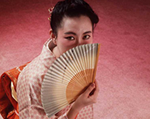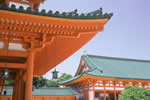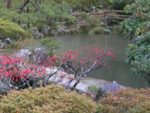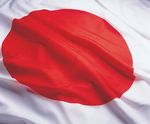 The image of a geisha is indigenous in Japanese culture. The history of these female entertainers in Japan can be traced back to the 11th century. However, we can observe a dramatic decline in the number of geisha's nowadays. This is mostly due to the fact that becoming a genuine geisha involves a lot of work, commitment and financial support.
The image of a geisha is indigenous in Japanese culture. The history of these female entertainers in Japan can be traced back to the 11th century. However, we can observe a dramatic decline in the number of geisha's nowadays. This is mostly due to the fact that becoming a genuine geisha involves a lot of work, commitment and financial support.
 Japanese architecture has a very long history. It is considered to have begun in the fifth century BC. Some evidences of prehistoric architecture from this time has survived in the form of terra-cotta houses and pit houses built by the Japanese neolithic tribe, known as Jomon. Since that time architecture in Japan has changed considerably, developing a variety of traditional styles and different types of designs. Japanese contemporary architecture is exiting and at the same time influential all over the world.
Japanese architecture has a very long history. It is considered to have begun in the fifth century BC. Some evidences of prehistoric architecture from this time has survived in the form of terra-cotta houses and pit houses built by the Japanese neolithic tribe, known as Jomon. Since that time architecture in Japan has changed considerably, developing a variety of traditional styles and different types of designs. Japanese contemporary architecture is exiting and at the same time influential all over the world.
 The art of Japanese gardens have been believed to be one of the most important parts of Japanese culture for many centuries. The garden design in Japan is strongly connected to the philospohy and religion of the country. Shinto, Buddhism and Taoism were used in the creation of diffrent garden styles in order to bring a spiritual sense to the gardens and make them places where people could spend their time in a peaceful way and meditate.
The art of Japanese gardens have been believed to be one of the most important parts of Japanese culture for many centuries. The garden design in Japan is strongly connected to the philospohy and religion of the country. Shinto, Buddhism and Taoism were used in the creation of diffrent garden styles in order to bring a spiritual sense to the gardens and make them places where people could spend their time in a peaceful way and meditate.
 Japanese food is more than the infamous sushi and sashimi dishes. There’s actually a lot more variety than you may think. However, rice is still a main component to Japanese cuisine. Below is a list of the traditional Japanese foods you will find everywhere in Japan.
Japanese food is more than the infamous sushi and sashimi dishes. There’s actually a lot more variety than you may think. However, rice is still a main component to Japanese cuisine. Below is a list of the traditional Japanese foods you will find everywhere in Japan.
 The national flag of Japan has a crimson disc, symbolizing the sun, in the center of a white field. It is known as the Hinomaru (literally meaning ‘sun disc’). It is said that at the time of the Mongol Invasions of Japan, between 1274 and 1281 the priest Nichiren presented a sun flag to the shogun. The Tokugawa shogunate (1603-1867) adopted the flag for its ships in the early 1600s.
The national flag of Japan has a crimson disc, symbolizing the sun, in the center of a white field. It is known as the Hinomaru (literally meaning ‘sun disc’). It is said that at the time of the Mongol Invasions of Japan, between 1274 and 1281 the priest Nichiren presented a sun flag to the shogun. The Tokugawa shogunate (1603-1867) adopted the flag for its ships in the early 1600s.
